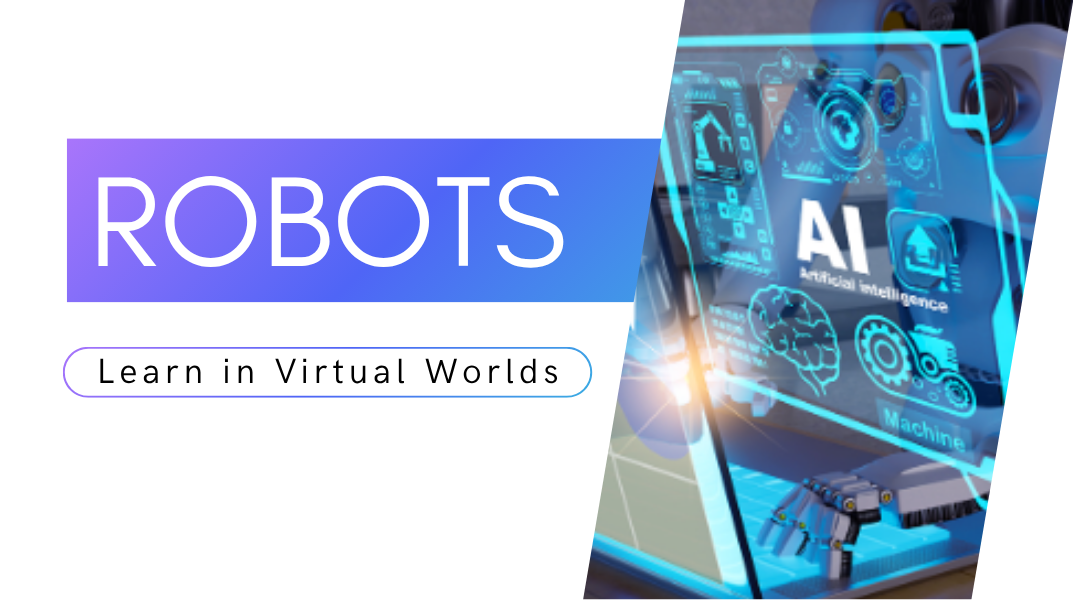Remember when robots were just clunky metal figures in movies? That fantasy is quietly transforming into our everyday reality. But there’s a catch—teaching a machine to navigate our messy, unpredictable world is incredibly difficult. You can’t just program a robot for every single situation it might encounter. So how are we solving this? The answer lies not in better hardware, but in a revolutionary new kind of classroom: vast, detailed virtual worlds.
The Old Way: The Slow, Costly Grind of Robot School
Traditionally, training a robot was a painstaking physical process. Engineers would guide a machine through a task, step-by-step, in a controlled lab. If you wanted a robot to learn to walk across a room, you’d have to manually adjust its programming every time it stumbled over a power cord or slipped on a rug.
This method had huge limitations:
- It was slow. Mastering a single task could take weeks or months.
- It was expensive. Every fall and failure meant potential damage to costly hardware.
- It was limited. There was no safe way to train a robot for rare but critical events, like a child’s toy suddenly rolling into its path or a sudden loss of lighting.
Robots trained this way were fragile. They operated well in predictable environments like factory assembly lines, but they were utterly lost in the dynamic chaos of a real home, hospital, or city street.
The Game Changer: Learning by Living a Million Digital Lives
The breakthrough came from an unexpected direction: video game technology. Platforms like NVIDIA’s Omniverse and others allow us to create hyper-realistic digital twins of our world. Inside these simulations, we can create thousands of unique robot students and put them through a lifetime of learning in a matter of days.
Here’s how it works:
- Create a Perfect Digital Playground: Engineers build a virtual environment that mimics the real world with stunning accuracy. This includes physics (gravity, friction), visuals (shadows, reflections), and even the behavior of other objects and people.
- Unleash the AI: Instead of being painstakingly programmed, the robot’s “brain”—an artificial intelligence—is placed into this simulation. Its mission is simple: figure out how to accomplish a goal, like walking across a room or picking up a cup.
- Trial and Error at Lightning Speed: The AI tries, fails, and tries again. It attempts to take a step, slips on a virtual banana peel, and learns not to do that again. It bumps into a virtual chair and learns to navigate around it. It does this millions of times, learning from every single mistake.
- The Power of Scale: Crucially, we don’t train just one robot. We train thousands of copies simultaneously, each encountering slightly different scenarios—a different chair arrangement, a wet floor, a barking dog. This collective learning builds a robust intelligence that understands not just one path, but the concept of navigation.
The advantages are staggering:
- Speed: A robot can accumulate years of “experience” in a single weekend.
- Safety: A virtual robot can crash a virtual car a thousand times without any real-world consequences.
- Comprehensiveness: We can expose the AI to every conceivable “what-if” scenario, from the mundane to the catastrophic, ensuring it’s prepared for anything.
The Real-World Impact: Your Future with a Digitally-Trained Companion
So, what does this mean for us? This shift from physical to virtual training is the key that will unlock the next generation of robots and AI companions.
- Your Future Self-Driving Car: Before an autonomous vehicle ever touches asphalt, it has already driven billions of virtual miles. It has navigated through blinding snowstorms, avoided jaywalking pedestrians in the rain, and handled tire blowouts at high speed—all within the safety of a simulation. When it finally arrives on your street, it will be the most experienced driver you’ve ever encountered.
- The Helpful Home Robot: Imagine a humanoid robot that can load your dishwasher, fold laundry, or help an elderly person get out of a chair. Training this in a real home would be destructive and dangerous. In a simulation, the robot can practice these delicate tasks millions of times, learning the precise amount of force needed to handle a wine glass without breaking it, long before it ever steps into your kitchen.
- Your Multi-Form AI Companion: This technology points toward a future where your AI isn’t confined to a single device. It’s a continuous presence. Think of it as your own R2-D2.
- In your smart glasses, it helps you navigate a new city, identifying landmarks and translating signs in real time.
- In your car, it’s the co-pilot that has already “experienced” this exact route in a storm.
- In your home, it’s the intelligence behind a physical robot that can fetch items or warn you if you left the stove on.
- On your phone, it manages your schedule with an understanding of your habits and preferences.
This companion learns from all your interactions, creating a seamless, intelligent thread throughout your day. It’s not multiple apps; it’s one intelligent entity that wears different “hats” depending on what you need.
Conclusion: A Collaborative, Not Automated, Future
The goal of this virtual training revolution isn’t to create a world of independent robots that replace us. Instead, it’s to build capable partners.
By offloading the dangerous, repetitive, and computationally complex tasks to machines that have been rigorously educated in digital worlds, we free ourselves to focus on what humans do best: creativity, empathy, strategy, and innovation. The future being built in these simulations is not one of cold automation, but of warm collaboration. It’s a future where intelligent machines, trained in the infinite possibilities of virtual worlds, step into our own to extend our capabilities and enrich our lives. The line between science fiction and reality is blurring, not because the robots are here, but because they’ve finally gone to school.
